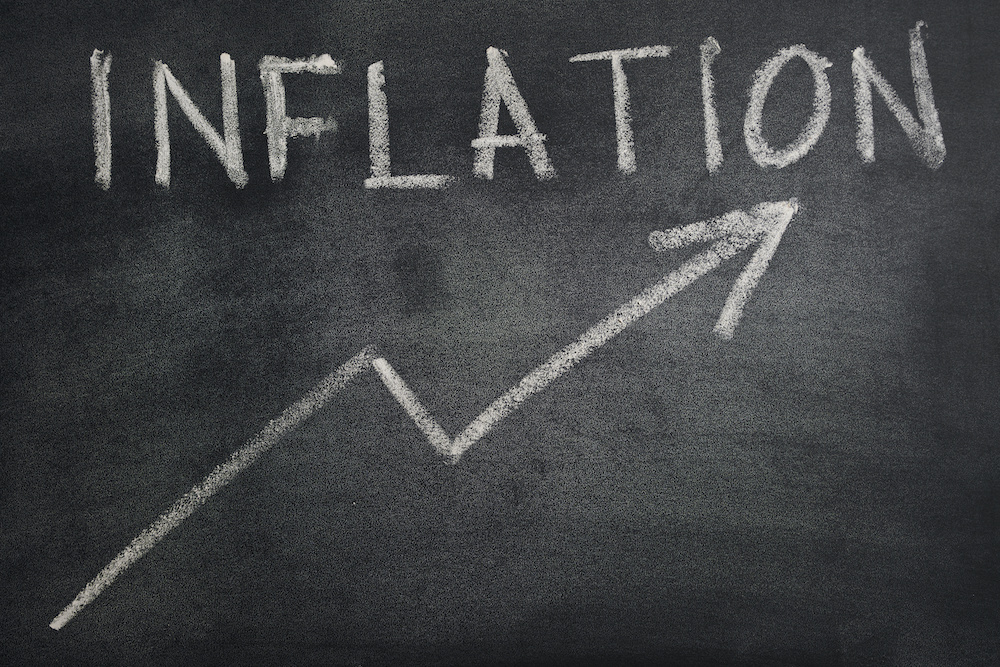We wrote last week about the well-fed boom, prospective Australian GDP growth roaring along at 4%+ annual growth pace over the next year or two and still on a rich diet of low official interest rates and more government spending. There is an increasing risk that the sustained boom will eventually boil over to higher inflation and not just a temporary lift in inflation that the Treasury Departments and Central Banks in most advanced economies are expecting over the middle months of 2021.
Policymakers in the US and here in Australia are working on similar presumptions about how inflation will behave as they continue to pump prime fast-growing economies. The first assumption is that long-term disinflationary forces are still well entrenched, especially those relating to slow wage growth. If wage growth is slow that means any temporary lift in annual inflation from a low base a year ago during the recession will dissipate.
Both the US Federal Reserve and the RBA are forecasting temporarily higher annual inflation in mid-2021 before it settles lower for a period and eventually starts on a sustainably higher track two or three years down the track. These forecasts of a temporary inflation hill in 2021 underpin the guidance from both central banks that low official interest rates will not change over the next two or three years.
In the US, the inflation hill is starting to run higher than forecast. The April CPI reading was higher than expected, up 0.8% m-o-m lifting annual inflation to 4.2% y-o-y from 2.6% in March. The core CPI taking out volatile food and energy prices was also high, up 0.9% m-o-m (the biggest monthly increase in 40 years) taking the annual rate up to 3.0% y-o-y from 1.6% in March.
Higher-than-expected US inflation may still not be a problem for the Fed if it is confident that monthly inflation readings will settle down. However, it was not just the CPI tracking higher than expected in April, US producer prices were higher than expected as well. Producer prices rose by 0.6% m-o-m lifting annual producer price inflation to 6.2% y-o-y from 4.2% in March. Core producer prices excluding food and energy prices rose 0.7% m-o-m lifting annual core producer price inflation to 4.1% y-o-y from 3.1% in March.
Pipeline inflation pressure appears to be building in the US even without strong wage growth. Robust growth in aggregate demand in the US is still being fanned by government stimulus spending and easy money stretching supply and, in some cases, is lifting prices.
The problem of strong aggregate demand growth stretching limited supply is not yet as evident in Australia as in the US. Also, our mid-2021 “temporary” inflation hill will not be as high as in the US. Our annual CPI change should peak around 3.2% y-o-y in Q2, a percentage point less than in the US and will recede more sharply in Q3. Pipeline inflation pressure is still weak in Australia. Finished good producer prices in Q1 were up only 0.2% q-o-q and 0.4% y-o-y.
The RBA’s low inflation forecasts are not yet as questionable as those of the US Fed. However, the free spending Government Budget – another $A68 billion of new spending over the next four financial years – combined with Australian households and businesses looking confident to spend much more will start to stretch production and lead to noticeable pockets of upward pressure on prices well before 2024.
It looks like excess demand will drive up inflation over the next year or two and the process may have started already in the United States. The US Fed and the RBA are still working on the premise that sustainably higher inflation is a cost-push (more particularly a wage-push) phenomenon, and that aggregate demand can be allowed and encouraged to run well above long-term trend growth.
There is a chance that the Fed and the RBA may still be right and that implies that neither central bank will change their low official interest rate guidance quickly. But if the data over the next few months indicates they are not right about inflation, the higher inflation rate in the US means the Fed will buckle first. We expect the Fed’s interest rate guidance to change in late 2021 towards preparing the market for a rate hike and then delivering a rate hike in the first half of 2022.
Demand pull inflation pressure in Australia is running several months behind the US and gives the RBA reason to maintain its low official interest rate guidance through to mid-2022 ahead of warning of higher interest rates later in 2022 and a first rate hike early in 2023.
Bond markets are already starting to take on board the changes we are expecting to the Federal Reserve’s and RBA’s official interest rate guidance. Nevertheless, the move upwards in longer-term bond yields is still likely to be a volatile affair while there is still any chance offered by soft data reports that allows support for current guidance of low official interest rates persisting.

